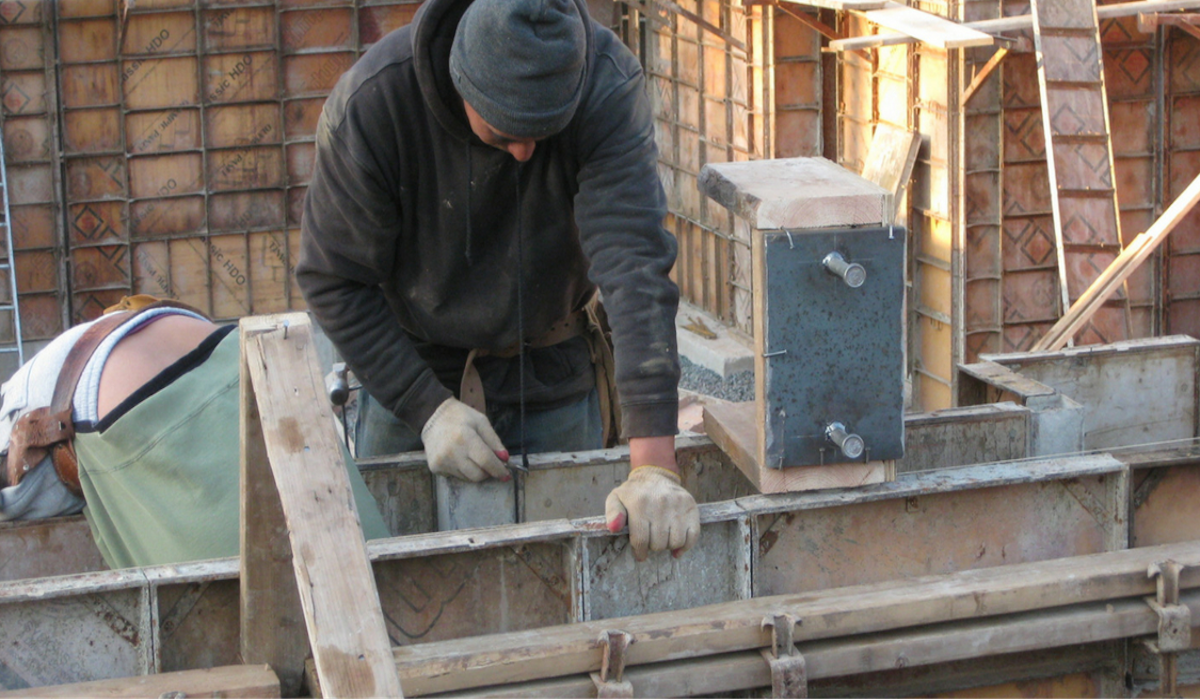
Removing concrete formwork can also be called striking off or stripping of formwork. This is carried out only after the concrete has cured and hardened. Although, when the formwork obstructs further construction work and/or needs to be reused in another place, engineers will want to remove the formwork earlier than the typical stipulated time.
Before stripping of formwork from concrete structures, one must keep in mind that it shouldn’t result in:
- The collapse of the concrete structure under self-weight or design load.
- Long-term or short-term deflection of the structure.
- Physical damage to the concrete structure.
Early removal of concrete formwork can also result in freeze-thaw damage or cracking of the concrete due to thermal contraction. To avoid these problems, once formwork is struck off, concrete structures are insulated.
Concrete Formwork must be removed only when the concrete structure can withstand the calculated design load or at least has gained strength that is twice the stress subjected to it upon removal of formwork.
Table of Contents
Factors Affecting The Removal Of Concrete Formwork
Several factors affect the time of removal of formwork from concrete, here are a few:
- Grade of cement and concrete: Higher the grade of cement and concrete, the faster the concrete strengthens.
- Type of cement: Different types of cement have different periods of strength development. For example, Pozzolana Portland Cement takes 10/7 the time Ordinary Portland Cement takes to strengthen.
- Temperature: Higher the temperature of the concrete and the environment, the faster the concrete strengthens. In cooler conditions, the strengthening becomes slow due to the heat of hydration from the concrete seeping out into the environment.
- Use of accelerators to hasten the strengthening of concrete.
- Size of the concrete member: Larger the concrete structure, the faster the structural members gain strength.
The most concrete way (Pun intended.) to estimate whether or not the concrete structure has gained enough strength to strike off the formwork, is to perform tests on concrete cylinders or cubes. The condition is that these cubes or cylinders must be made of the same mix of concrete as the structural member and hardened and cured under the same circumstances as that of the structural member.
How much strength should the concrete have gained before the removal of formwork?
- Lateral parts of all the structural members’ formworks can be removed when the concrete strength hits 2.5 N/mm2.
- For slabs and beams:
- With a span of up to 6m, the interior parts of the formwork can be removed when the concrete reaches 70% of its calculated design strength.
- With a span greater than 6m, the interior parts of the formwork can be removed when the concrete reaches 85% of its calculated design strength.
How long do you wait before removing the concrete formwork?
There are several ways depending on various factors to define when the concrete formwork has to be removed.
When Ordinary Portland Cement is used:
- Vertical formwork pieces can be removed after 24 to 48 hours, depending upon the engineer’s decision.
- Formwork holding the slab up can be removed after 3 days with the props below still supporting the structure.
- The props below can be removed after 14 days.
- Formwork holding up the beams can be removed after 7 days with the props below still supporting the structure.
- The props can be removed after 14 days for beams that span up to 6m and 21 days for beams that span over 6m.
Portland Pozzolana Cement (PPC) and Low Heat Cement (LHC) take 10/7th the time Ordinary Portland Cement takes for the stripping of formwork while Rapid Hardening Cement takes 3/7th of that same time.
There are more than one ways to define the correct time for removing the concrete framework. Depending on the material finesse and the structuring the criticality of the process varies.